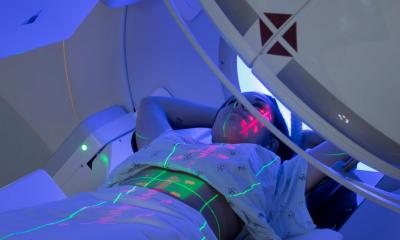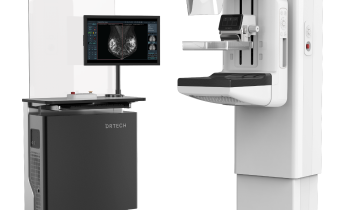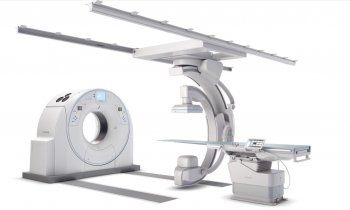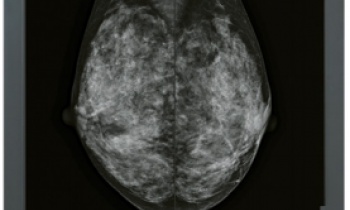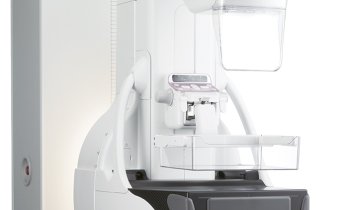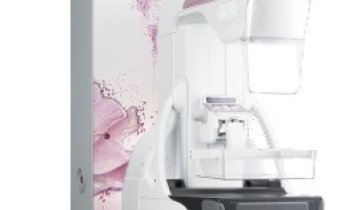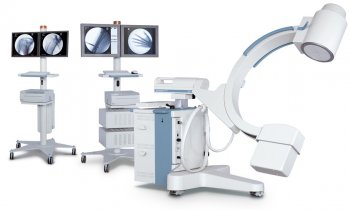© Sebastian Kaulitzki – stock.adobe.com
News • Trial on selective surgery omission
Invasive breast cancer: surgery not always necessary, study finds
Omitting breast surgery after treatment resulted in patients remaining cancer free after five years
Surgery may not be the best next course of treatment for patients with early-stage breast cancer who had a complete response to neoadjuvant (pre-surgical) chemotherapy and standard radiation treatment, according to new data from researchers at The University of Texas MD Anderson Cancer Center.
Five-year results from the Phase II trial, published in JAMA Oncology, revealed that breast cancer still had not returned in patients who had a pathologic complete response (pCR) after chemotherapy and radiation, without surgery. After a median follow-up of 55.4 months, each of the 31 patients with a pCR remained disease free, and the overall survival rate was 100%.

Image source: MD Anderson Cancer Center
The findings, which also are being presented at the Society of Surgical Oncology 2025 Annual Meeting, suggest that some patients may be able to avoid breast surgery, which has long been part of standard treatment.
"The absence of detectable breast cancer recurrences at the five-year mark highlights the tremendous potential of this surgery-free approach to breast cancer management," said principal investigator Henry Kuerer, M.D., Ph.D., professor of Breast Surgical Oncology. "Our innovative, precise method of detecting cancer in these patients has successfully demonstrated that we can treat them while avoiding surgery for this group." This is the first modern prospective trial of surgery omission in patients with early-stage breast cancer who respond favorably to chemotherapy. It builds on data from an earlier report with a follow-up of roughly two years.
Globally, 2.3 million women receive a breast cancer diagnosis every year. For more than a century, surgery has been the standard of treatment for nonmetastatic invasive disease, but improved chemotherapy agents have increased pCR rates significantly. Combining these high response rates with selective image-guided vacuum-assisted core biopsy (VACB) and stringent histologic processing has improved physicians’ ability to determine which patients may not need surgery.
Recommended article
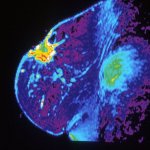
Article • Research, diagnostics, treatments
Focus on breast cancer
Breast cancer (breast carcinoma; often abbreviated as BRCA) is the most common cancer in women in many countries and the cancer with the highest mortality rate. The diagnostic and therapeutic options for breast cancer are correspondingly diverse. Keep reading for latest developments in early detection, staging, treatment and research.
This multicenter trial enrolled 50 women over age 40 with early-stage triple-negative or HER2-positive breast cancer. The mean age of participants was 62 years; 21 patients had triple-negative breast cancer and 29 had HER2-positive breast cancer. All participants had a residual breast lesion less than two centimeters after standard chemotherapy treatment, as determined by imaging. Patients had one image-guided VACB. If no disease was identified on the biopsy, surgery was omitted, and patients proceeded to standard whole-breast radiotherapy. The VACB identified pCR in 31 patients. No serious biopsy-related adverse events or treatment-related deaths occurred. Limitations of the study include its size and follow-up time.
This multicenter trial has been expanded to 100 patients and also is currently being investigated further in South Korea. "These continued promising results suggest that eliminating breast surgery for invasive breast cancer could become the new standard of care, offering women the opportunity to preserve their bodies,” Kuerer said. “While we are hopeful that this approach will become routine, further clinical trials are necessary before this is a standard therapy."
Source: MD Anderson Cancer Center
04.04.2025





